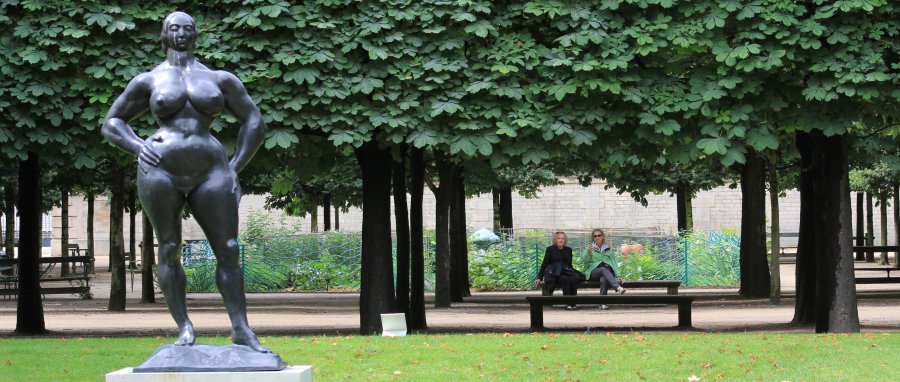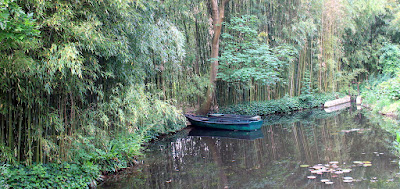A friend gave us some good advice about restaurants in Paris. He said "Just eat your way through the Paris," so we gave it our best shot.
Our first night in Paris took us to
Brasserie Bofinger, just off the Bastile circle. I had the beef filet but Jeannene's chicken might have been better.
Au Bourguignon du Marais was around the corner from our hotel. The specialty is bourguignon, beef and potatoes slowly simmered in red Burgundy. I told myself that I had done enough walking that day to deserve something that rich and heavy. This is where I discovered leek salad.
Maxim's has a long and storied history. It was popular with celebrities such as Aristotle Onassis and Maria Callas in the 1950s. Wolfgang Puck was chef at the restaurant and Ho Chi Minh may have worked there as a busboy. It's mentioned in Ian Fleming novels and shown in a scene in Woody Allen's Midnight In Paris.
So, when we happened to walk by one afternoon, we had to check out the mini version next door. The ambiance was delightful, the waiter was attentive and we loved the Art Nouveau decor. The food, no so much. We discovered why TripAdvisor readers rate it No.5,008. Skip the veal special, go for the salad.
On a night when the weather stayed warm enough to dine outside, we found the Cafe St. Catherine on a quiet side street near Place de Vosges. I had the fish wok but the salmon lasgna was the star of the evening.
Pasta in Paris? You bet. We found
Sens'o on stroll down the Rue St. Louis and I suggested we take a break from French cuisine. It turned out to be a popular move. Everybody loved their plates and their Sicilian wine. And the prices were also a nice break from the French. I had penne pasta with chicken in a cream sauce. Jeannene loved her pizza with salmon.
We chose
Le Dome Bastille for the seafood. I gave my crawfish risotto a thumbs up. Also at the table: dorage (also called seam bream), sardines, a nice pouilly fume and a souffle and tiramisu for dessert.
 Le Colimacon
Le Colimacon had all the exotic food we expected to find in Paris: foie gras, rabbit, and escargot. We stayed with more familiar fare. I had a very tasty tataki and Jeannene got the half lobster. George ordered the rabbit and I tried a sample. It was good, a bit like chicken with a darker look and texture. Jeannene said the lobster was unimpressive and Janell's scallops were undercooked. Also, the service was slow and not well organized our waitress brought us shots of apple liqueur to make amends.
My favorite place to eat? That would be Au Petit Versailles, the little bakery and coffee shop around the corner from our hotel. It was the perfect place to get fueled up for a day on the streets.

























